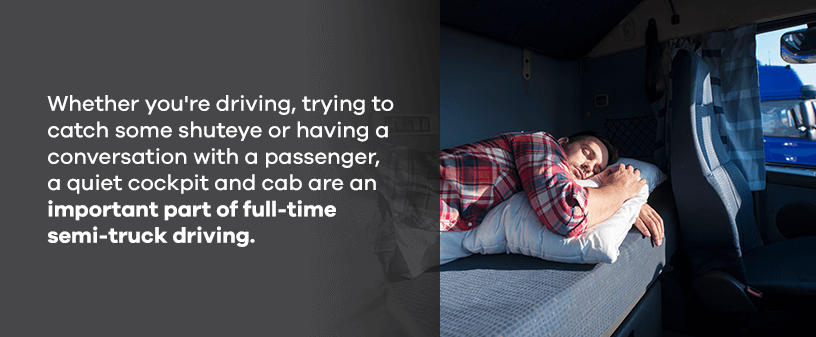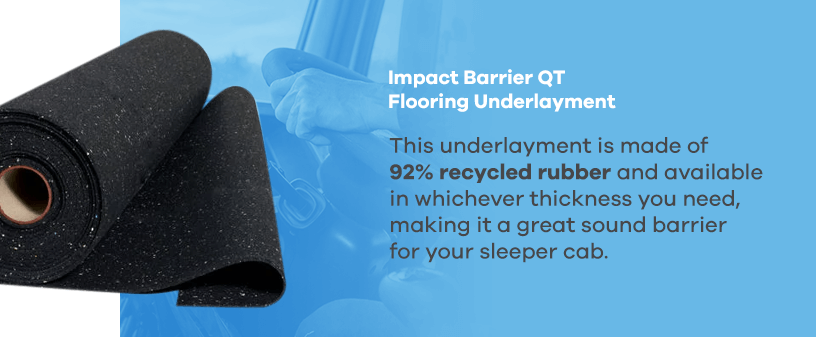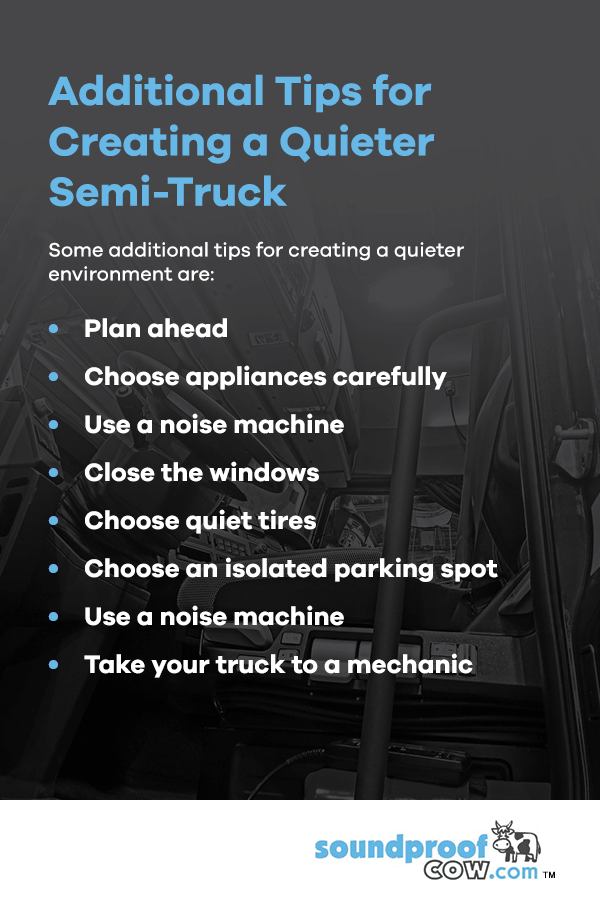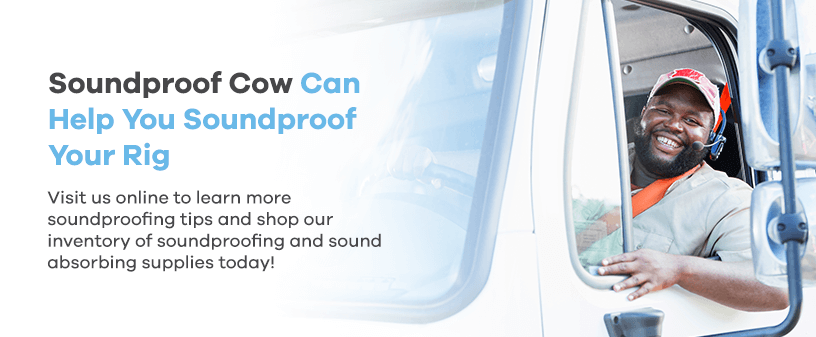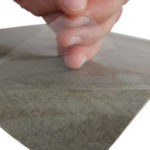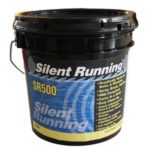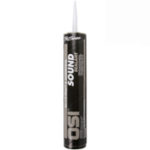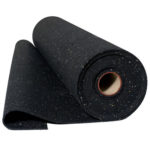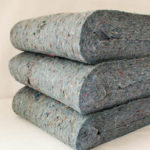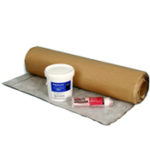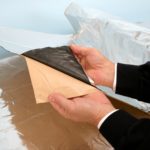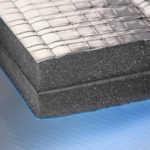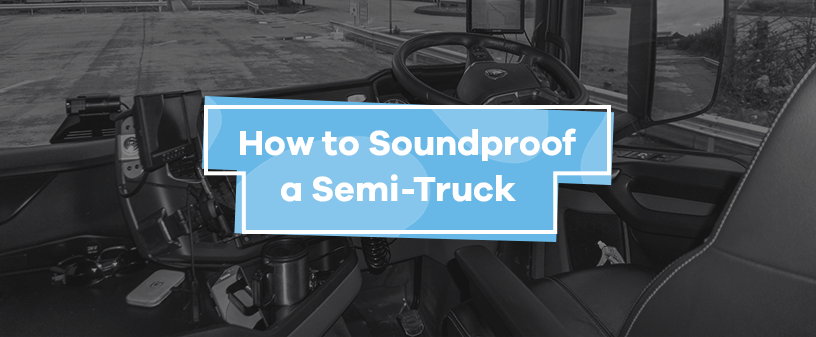
More than 3.5 million Americans drive trucks for a living, making it one of the country’s most popular occupations. Many of these drivers are full-time semi-truck operators who live, work and sleep in their rig most of the year. While this is a great way to keep costs low and help you travel with some of the comforts of home, it can also be a distracting environment for sleep or after-work relaxation.
Truck stops and rest areas are notoriously busy places, no matter the time of day or night. When there is a lot of sound coming from inside or outside of your truck, catching a mid-afternoon nap, getting a restful night’s sleep and staying focused while driving can be challenging. Feeling rested is an essential part of a truck driver’s job, which requires long hours, constant attention and deep focus while on the road.
If you’re one of the many people who live, work and sleep in a semi-truck for the majority of the year, use this guide to find out how to use soundproofing to create a more comfortable space.
Table of Contents:
Sources of Noise in a Semi-Truck
Tips for Soundproofing Driver’s Cockpit and Sleeper Cab
Soundproof Truck Cab Doors
Soundproof Truck Cab Floors
Soundproof Truck Walls and Roof
Tips for Creating a Quieter Semi-Truck
Sources of Noise in a Semi-Truck
From barking dogs to heavy rain to howling winds, noise can come from all sorts of places while driving your truck and when you’re parked for the night. These sounds aren’t just bothersome — they are also a risk to you and others on the road. Driving with distractions present can be dangerous, and often, those distractions are unintentional and come from the environment around you.
Common causes of semi-truck noise include:
- Outside sound filtering in: The most easily detectable noise comes from outside the truck, either through open windows, poorly sealed doorways or tires hitting against the road while driving. Gaps and cracks along any part of the cab or in the walls, floorboards and roof let in sounds.
- Rattling from unsecured or loose parts: If you hear a lot of rattling or internal vibrations while driving, there might be a loose part or some personal belongings unsecured. Check that the items in your dash, cup holders, console, glove departments and in-door storage compartments are not the culprit. Re-open and close all doors and windows to make sure they are secure. If necessary, inspect existing panels and furniture and retighten them if they are loose. If rattling is coming from under the hood, you may need to visit a mechanic.
- Reflected indoor sound: Hard surfaces inside your truck, like furniture, floorboards, storage compartments and the walls, can create an echoey space for sound to amplify.
The quieter your truck is, the easier it will be to detect any uncommon or worrisome sounds. By using semi-truck soundproofing to reduce and eliminate noise pollution in your rig, you’re doing your part to create a safer and more peaceful ride.
Tips for Soundproofing the Driver’s Cockpit and Sleeper Cab
Whether you’re driving, trying to catch some shuteye or having a conversation with a passenger, a quiet cockpit and cab are an important part of full-time semi-truck driving. Some noise — like items rattling around in your cupholder and console — are easy fixes you can do once pulled over. Other sounds — like construction and other drivers — are beyond your control. Fortunately, there are several soundproofing materials and methods you can use to minimize or even eliminate those sounds.
Before you begin soundproofing, take inventory of the noises you hear. Identify problem areas around your rig. For many drivers, the cab doors, floors, walls and ceilings are frequently to blame for noisy conditions. Once you’ve identified where most of the sound is coming from, you can choose the soundproofing method that works best for your space and budget. Here is what you need to know about soundproofing a semi-truck:
How to Soundproof Truck Cab Doors
If your truck’s doors are thin, unsealed or leave a small gap between the door and the frame or window, outdoor noises can easily filter inside. Mass loaded vinyl barriers, sound deadening sheets, sound coatings and sound sealants can help:
- Mass loaded vinyl (MLV) barriers: MLV barriers are a type of dense, sound-reflecting material made of sand, salt and metal particles. They are perfect for enclosed spaces, like a cockpit or cab, where you need to keep sounds from moving between the doors and walls.
- Vibra Block® sheets: Vibra Block® is an industrial-strength sound deadening sheet or strip you can apply to steel panels inside your truck. Use a combination of sheets and strips to match your door’s unique size and shape, or cut the sheet down to fit the space you need. Because a little goes a long way, you can peel-and-place Vibra Block® sheets on the inside of your semi-truck doors and other areas of your cockpit and cab.
- Silent Running: You can also paint a soundproof coating on your doors to convert common road noises and vibrations into temporary low-grade heat. Order Silent Running in a 1-gallon or 5-gallon tub, and you’ll have plenty left over to coat problem areas on your walls, too!
- Sealants and caulking: Use a soundproofing caulking or sealant — like OSI® Pro-Series SC-175 Acoustical Sound Sealant or pourable liquid urethane foam — around door and window gaps to minimize sound transmission. This will also reduce uncomfortable drafts inside your cab.
For door windows, look into replacing the current glass panels with thicker, more sound-resistant ones. When you’re not driving, you can also use noise-reducing curtains, which will block out unwanted noise and light at night. In many cases, you’ll only need one or two of these methods to eliminate the excess noise coming from your semi-truck doors effectively, but feel free to mix and match these methods to create an even quieter environment.
How to Soundproof Truck Cab Floors
A lot of semi-truck noise comes from your tires rolling against the road while in motion, but sound can also seep into your sleeper cab while you’re parked if there are tiny cracks present or if you don’t have any sort of flooring between you and the bottom of the truck. While rugs and carpets can certainly help muffle these sounds, layering sound deadening mats and underlayments on the floor is the best way to manage it:
- Impact Barrier QT Flooring Underlayment: This underlayment is made of 92% recycled rubber and available in whichever thickness you need, making it a great sound barrier for your sleeper cab. You can lay Impact Barrier QT underlayment on truck floors with carpet, tile, laminate or similar materials.
- PROFLEX™ 90: PROFLEX™ 90 is a thick, long-lasting and easy-to-install rubberized laminate underlayment you can install on your truck’s floors to reduce sound transmission.
No matter the type of flooring you’ve got in your sleeper cab and cockpit, a layer of underlayment will do wonders for reducing vibrations and sounds that threaten to distract you on the road and interrupt your downtime. When applying sound deadeners to your floor, concentrate on those areas where the sound is most noticeable, like the floorboards beneath the driver and passenger seats.
How to Soundproof Truck Walls and Roof
Small cracks in your walls and roof — even those too small to see — can create a lot of noise inside your truck. Thin and worn walls and ceilings can also contribute to a noisy sleeper cab, especially during heavy rain or strong winds. The best way to combat these problems is through barriers, panels and truck sound deadening insulation:
- Quiet Barrier® Specialty Composite: Quiet Barrier® is a multi-layer composite barrier that blocks both noise and heat. Install a layer of this barrier on just your roof, or attach it to each wall to create a noise-free chamber wherever you go. It’s a popular choice for industrial and heavy-machine applications, so you know it has the power to control the sound in your rig.
- Quiet Batt: Quiet Batt™ is a type of in-wall insulation that reduces sound transfer from the outside through your walls and helps regulate the temperature inside your rig. Semi-truck insulation can also minimize the transfer of inside sounds escaping through the walls, so you can listen to your radio late at night without disturbing other trucks parked nearby.
- RoadBlockR Sound Deadening Material: We designed RoadBlockR with vehicles and busy roads in mind, and using it will make every drive feel like a more luxurious experience. This peel-and-stick soundproofing material helps keep out the normal roadway sounds, so you can enjoy your podcast, playlist or peace and quiet all journey long.
In addition to these methods, MLV and a coat of Silent Running can also help eliminate noise that comes from your walls and roof.
Additional Tips for Creating a Quieter Semi-Truck
As you can see, there are several noise-reducing options available to help you transform your semi-truck into a quieter, more comfortable place. Some additional tips for creating a quieter environment are:
- Plan ahead: Before applying any sort of soundproofing sheet, barrier, sealant or coating to your rig, thoroughly clean and dry your doors, walls, floors and ceiling so the materials can adhere correctly. Make sure you have all the installation products you need to complete the project. For best results, always take your time and follow all manufacturer instructions.
- Choose appliances carefully: Appliances have a natural hum when running, which can create a lot of noise in a small area. When furnishing your cab with a refrigerator, TV or lighting, make sure they function correctly, and look for ones designed for quieter operation.
- Use a noise machine: Truck stops and rest areas can be noisy, no matter how much soundproofing you have in place. If you’re parked at a truck stop to catch a nap or kick-back during the day or in a particularly busy area, these sounds can be distracting and disruptive. Use a noise machine to drown out distracting sounds when you’re trying to focus or sleep.
- Close the windows: Keep windows and vents closed whenever possible and safe. This will minimize how much outdoor noise filters inside. Consider covering them with noise-blocking black-out curtains if you’re a light sleeper or park during the day.
- Choose quiet tires: Some tires are designed to be quieter than others. They are usually narrow, made of softer rubber and have small markings inside straight grooves. Be sure to include them in your regular truck maintenance for maximum results.
- Choose an isolated parking spot: When parking for the night, choose a spot far away from natural gathering places, like near vending machines or dog walk areas.
- Take your truck to a mechanic: Sometimes, the source of a noisy semi-truck is mechanical. To keep your truck operating safely, efficiently and noise-free, schedule regular preventive maintenance inspections for your rig in between jobs. Never ignore or put off necessary repairs or replacements, as annoying sounds can grow into or indicate much more significant problems. Talk to your mechanic about installing quieter upgrades, like a softer suspension or thicker window panels.
With the help of these tips — and a soundproofed cockpit and sleeper cabin — you are well on your way to a more comfortable ride, free of excess noise pollution.
Soundproof Cow Can Help You Soundproof Your Rig
While truck driving has its rewards, long hours on the road and being away from home is tough work — that’s why semi-truck drivers deserve a quiet, relaxing space and a restful night’s sleep! Soundproof Cow has the soundproofing materials and tools you need to make your semi-truck feel like your home away from home, including acoustic panels, insulation, barriers, dampening and deadening systems, flooring underlayments and sound adsorption foam.
Need help deciding which soundproofing is best for your ride or have a question about installation? We’re here to help! Give us a call at 1-866-949-9269 and tell us about a little bit about your truck and sound concerns. You can also fill out our soundproofing questionnaire form to help us learn more about your needs.
Visit us online to learn more soundproofing tips and shop our inventory of soundproofing and sound absorbing supplies today!


